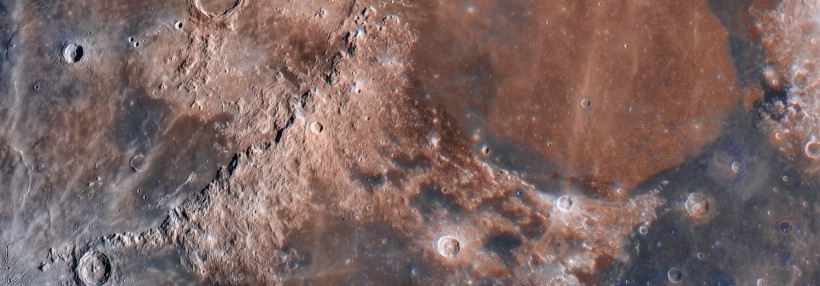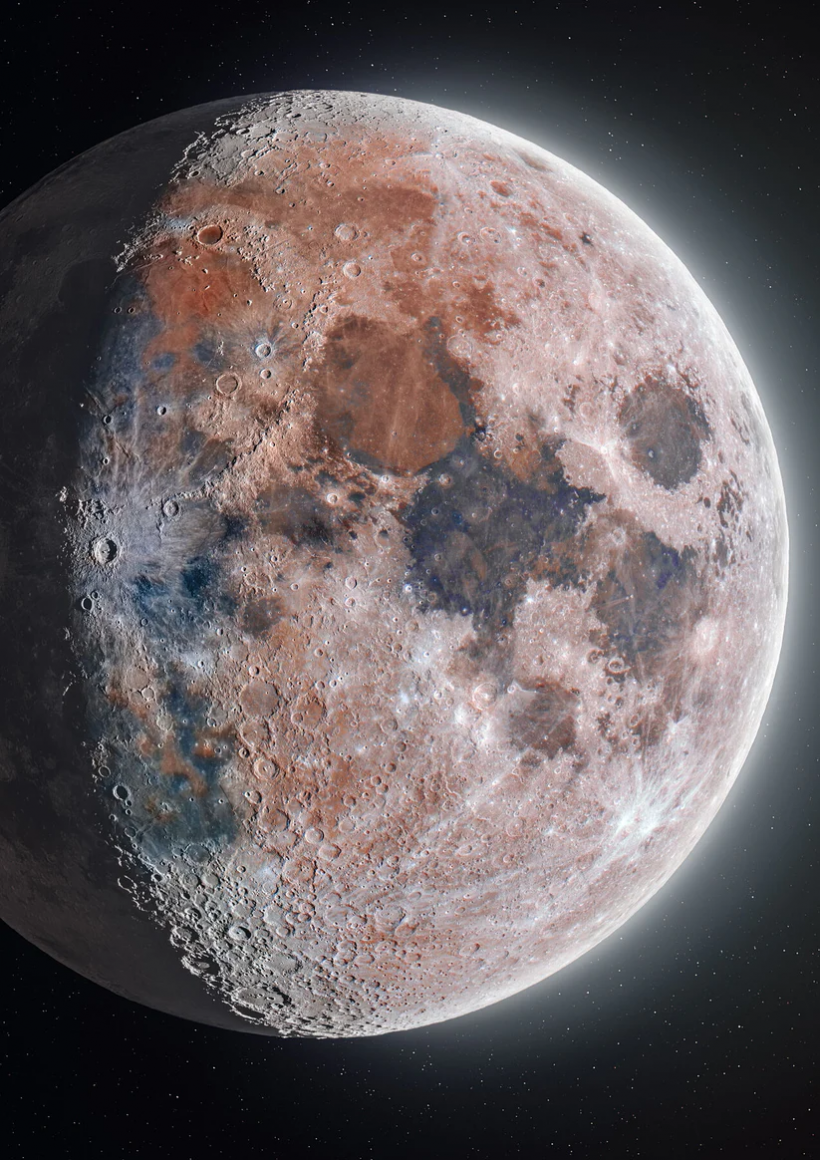The Moon has just been the subject of what two astrophotographers refer to as "the most ridiculously detailed picture," which took them over two years and more than 200,000 frames to complete.
This fascinating 174-megapixel picture was made possible by a collaboration between planetary scientist Connor Matherne and space photography enthusiast Andrew McCarthy.

The Moon is depicted in this intriguing 174-megapixel picture in a red and gunmetal-blue tint, with illumination on its right side as it faces Earth. McCarthy responded to curious Twitter users by describing the red areas as the result of Earth-errant oxygen atoms oxidizing iron and feldspar.
Red and Blue Colored Moon
As reported first by ScienceAlert, the image features the Moon striking in red and gunmetal blue tones and is illuminated on the right side as it faces our planet Earth. McCarthy explained to his followers on Twitter that the red areas of the moon are iron and feldspar oxidized by Earth-errant oxygen atoms.
While you may not believe that these are the real colors of the lunar object, ScienceAlert reported that the featured hues are accurate. McCarthy only increased the image's saturation to make the colors pop in full splendor.
Tens of thousands of shots were taken to record every corner, crook, and crater on the lunar surface. This task was in line with McCarthy's skills as he specializes in capturing detailed photographs. He was also helped by planetary scientist and deep space photographer Matherne, who was capturing the moon from Louisiana.

Read also: New Sharp Images of the 'Biggest Star Ever Found' Reveals Strange Details About Star Masses
Love Letter to NASA'S Artemis 1 Mission
This astrophotographic masterpiece was created by stacking up more than 200,000 photos that were all captured over the course of a single evening.
McCarthy told NPR that the project was put together like a mosaic, with thousands of pictures making up each tile, which only implies that the whole editing process has been extremely laborious.
The two have undoubtedly exceeded themselves and competed favorably with NASA's newly-minted James Webb Space Telescope, which is aimed at providing "ridiculously detailed" images of deep space.
However, another NASA program, one that is getting ready to send people back to the Moon for the first time since 1972, is what gave rise to this creative endeavor.
"This image is a love letter to the upcoming Artemis 1 mission, the first human-rated lunar launch vehicle in 50 years," McCarthy wrote in his tweet.
Since its inception in 2017, the Artemis program has so far cost around $40 billion. As part of NASA's larger effort to emphasize human space flight, its main objective will be to establish a prolonged presence on the Moon with a space station and a lunar base camp.
At the same time, Artemis is a part of NASA's long-term "Moon to Mars" program, which aims to transport astronauts to Mars in 20 years.
Related Article: NASA Will Land On The Moon For The First Time in 50 Years l Here's Everything You Need To Know About Artemis 1
This article is owned by Tech Times
Written by Joaquin Victor Tacla





